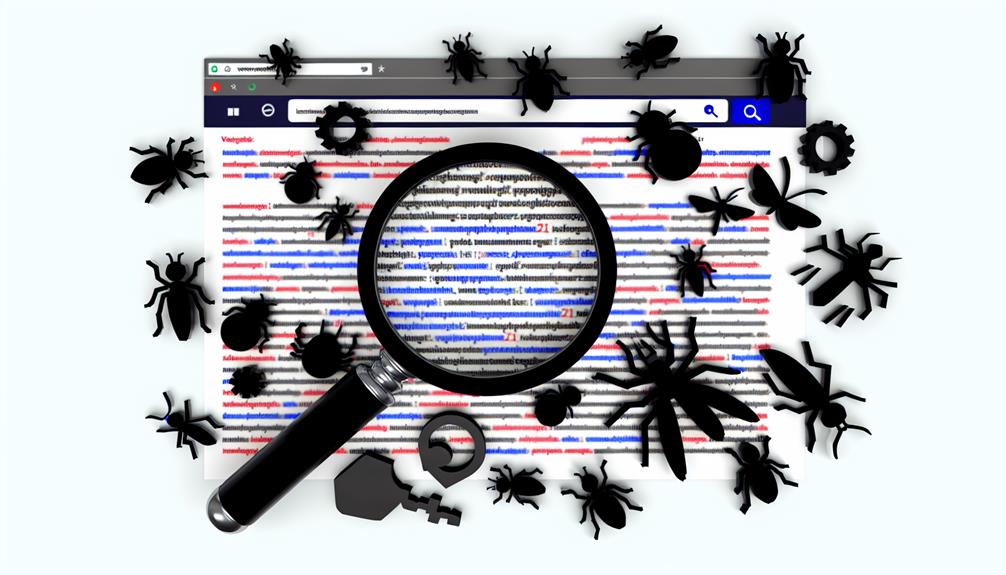Gone are the days of flipping through the Yellow Pages to find pest control services. Now, you’re more likely to reach potential customers through your website. However, if your site isn’t optimized, you’re missing out on a massive opportunity to grow your business.
In this complex digital era, it’s not enough to simply have a website, it needs to be functional, engaging, and optimized for search engines. So, how do you ensure your pest control website is up to scratch? Stick around and let’s explore some expert tips together.
Table of Contents
ToggleUtilizing Keywords in Pest Control SEO

When optimizing your pest control website, it’s essential to strategically utilize specific keywords in your SEO approach to boost your site’s visibility and ranking. Now, you might be wondering, how do I go about this?
Well, it’s all about understanding keyword density analysis and metadata optimization.
Keyword density analysis refers to the number of times a particular keyword appears on your webpage compared to the total number of words on the page. You want to strike a balance here. Overstuffing your content with keywords can be as detrimental as not using enough. Too high a density and search engines could penalize your site for keyword stuffing. Too low, and you mightn’t rank as high as you’d like.
Next, let’s talk about metadata optimization. This is the information that appears in the search engine results, like your page title and meta description. It’s important to include your keywords in this data, as it can significantly influence click-through rates.
Importance of Local SEO Strategies
While mastering keyword density analysis and metadata optimization is crucial, you can’t overlook the power of local SEO strategies in propelling your pest control website to the top of search results.
Local SEO is all about increasing visibility in your specific geographic area, and geo-targeting techniques are key to achieving this goal.
By efficiently using geo-targeting techniques, you’re able to focus your marketing efforts on the area where your potential customers live. You’re not just casting a wide net and hoping for the best. Instead, your content, ads, and website are all tailored to appeal specifically to local searchers.
Citations management also plays a vital role in your local SEO strategy. Consistent, accurate listings across the web boost your credibility with search engines, which in turn improves your ranking in local search results. It’s not just about having your name and address out there, it’s about ensuring your information is correct wherever it appears.
In a nutshell, local SEO strategies, including geo-targeting and citations management, are key to making your pest control website stand out in local search results. Without them, you’re missing out on a major source of potential business.
Link Building for Pest Control Businesses

In the realm of SEO, link building plays a pivotal role in enhancing the relevance and credibility of your pest control business’s website. This strategy involves acquiring hyperlinks from other websites to your own, which search engines use to crawl the web, discover new pages, and determine the ranking of those pages.
Anchor text optimization is a significant aspect of link building. It’s the clickable text in a hyperlink, and the right anchor text can boost your site’s SEO significantly. You should aim to make your anchor text descriptive, relevant, and succinct. Avoid over-optimization, as search engines may view this as spammy.
Backlink quality assessment is another critical element of link building. Not all backlinks are created equal. You’ll want to focus on obtaining high-quality backlinks from reputable, relevant sites. These carry more weight in the eyes of search engines and can significantly improve your site’s ranking.
In essence, link building for your pest control business isn’t just about quantity, but quality too. By focusing on anchor text optimization and backlink quality assessment, you can improve your site’s SEO and attract more customers.
Enhancing Website Performance and Usability
Boosting your website’s performance and usability can significantly ramp up your pest control business’s online visibility and customer engagement. One key aspect to focus on is Mobile Responsiveness. In today’s digital era, most people are accessing your website on their smartphones. If your website isn’t responsive, you’re likely losing a substantial number of potential customers.
An efficient way to enhance mobile responsiveness is by employing a mobile-first design approach. This means designing your website for mobile before scaling it up for larger devices. It’ll ensure your site looks great and works perfectly on smaller screens.
Next, let’s talk about User Engagement. It’s not enough for your site to look good; it’s got to engage users. Boost your site’s interactivity by adding videos, online chats, or a blog section where you can share helpful advice on pest control. User-friendly navigation and clear calls to action are also vital. Remember, a user who can easily navigate your site is more likely to convert into a customer.
In essence, enhancing your website’s performance and usability isn’t just about aesthetics. It’s about creating a seamless user experience that drives engagement and ultimately, business growth.
Effectively Implementing Social Media Optimization

Building on the idea of user engagement on your website, let’s also consider the power of social media optimization to extend your online reach and attract more customers.
In this digital age, your pest control business can benefit from social media platforms to boost visibility, increase traffic, and foster customer loyalty.
Here are some effective strategies for social media optimization:
- Content Creation: Regularly create and share engaging, informative content related to pest control. This could be blog posts, infographics, or short videos. Quality content not only attracts users but also compels them to share your posts, extending your reach.
- Social Engagement: Actively engage with your audience. Respond promptly to comments and messages, and participate in relevant discussions. This builds a sense of community and trust with your followers.
- Use of Hashtags: Incorporate relevant hashtags in your posts. They enable users to find your content easily, increasing your visibility.
- Analytics: Use social media analytics tools to track your performance. They provide valuable insights into your audience’s behavior, helping you refine your strategy.
Conclusion
Navigating the digital realm may seem daunting, yet it’s vital for your pest control business’s success. Remember, leveraging keywords in your SEO strategy isn’t just smart, it’s essential.
Similarly, local SEO and link building can catapult your visibility, while website usability directly impacts customer interaction.
Don’t forget social media – it’s not an afterthought, but a critical tool in your arsenal.
Successfully juggling these elements optimizes your pest control website, driving growth and profitability.





